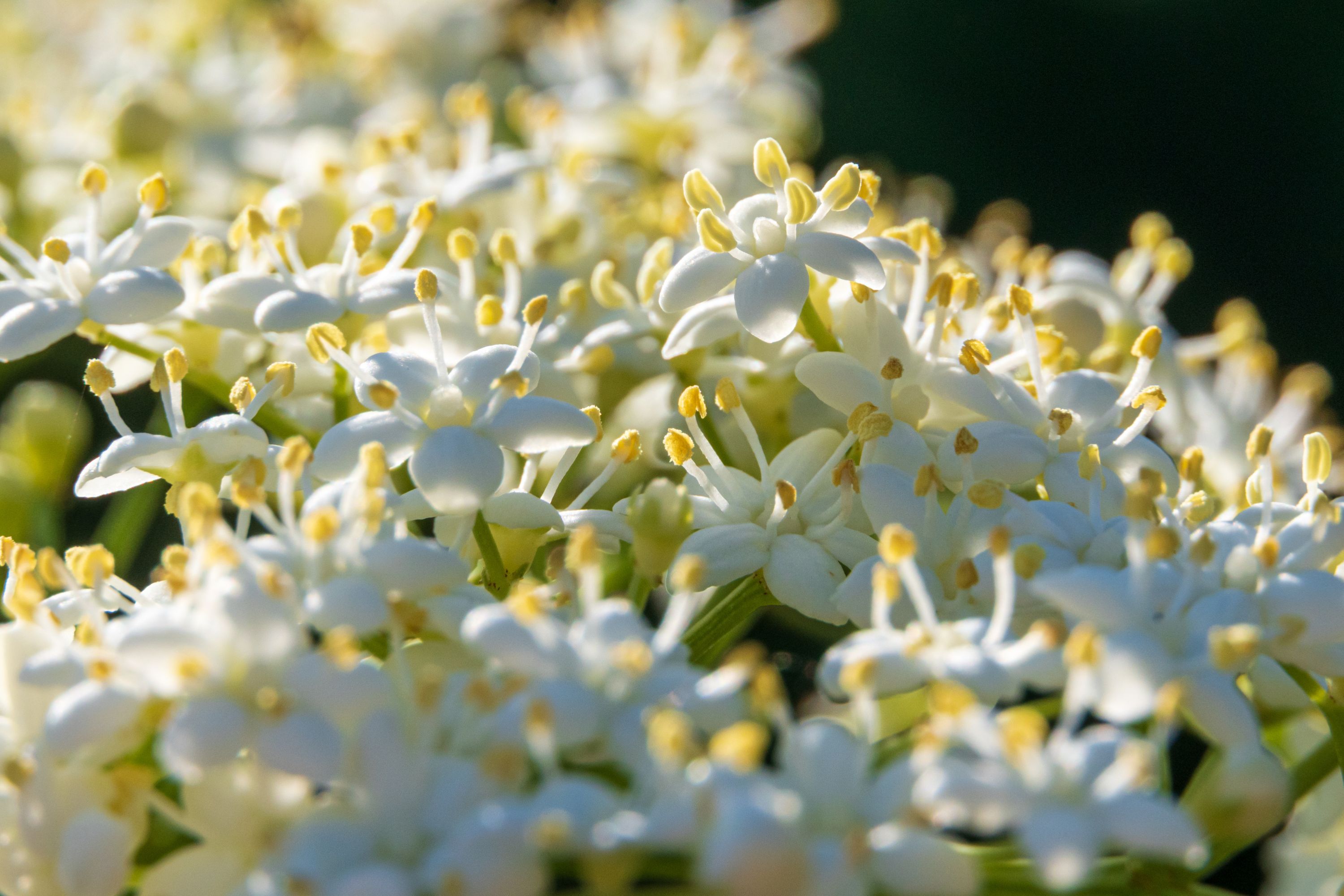American black elderberry
(Sambucus canadensis)

Description
Sambucus canadensis, the American black elderberry, Canada elderberry, or common elderberry, is a species of elderberry native to a large area of North America east of the Rocky Mountains, south to Bolivia. It grows in a variety of conditions including both wet and dry soils, primarily in sunny locations. It is a deciduous suckering shrub growing to 3 m or more tall. The leaves are arranged in opposite pairs, pinnate with five to nine leaflets, the leaflets around 10 cm long and 5 cm broad. In summer, it bears large (20–30 cm diameter) corymbs of white flowers above the foliage, the individual flowers 5–6 mm diameter, with five petals. Inedible parts of the plant, such as the leaves, stems, roots, seeds and unripe fruits, can be toxic at lethal doses due to the presence of cyanogenic glycosides, and alkaloids. Traditional methods of consuming elderberry includes jams, jellies, and syrups, all of which cook down the fruit and strain out the seeds. Unpublished research may show that S. canadensis (American elderberry) has lower cyanide levels than apple juice, and that its fruit does not contain enough beta-glucosidase(which convert glucosides into cyanide) to create cyanide within that biochemical pathway. For comparisons, assuming S. nigra has levels of no more than 25 micrograms of cyanogenic glycosides/milligram of berry weight, assuming all of the glycosides were converted to cyanide, and assuming a toxicity of 50 mg for a 50 kg vertebrate, one would need to eat 2 kilograms (~4.4 pounds) of berries in one sitting to reach the lower limits of lethal toxicity (1 mg cyanide/kg of weight). For the upper limits (3 mg/kg), one would need to eat 6 kg or ~13 pounds.
Taxonomic tree:







